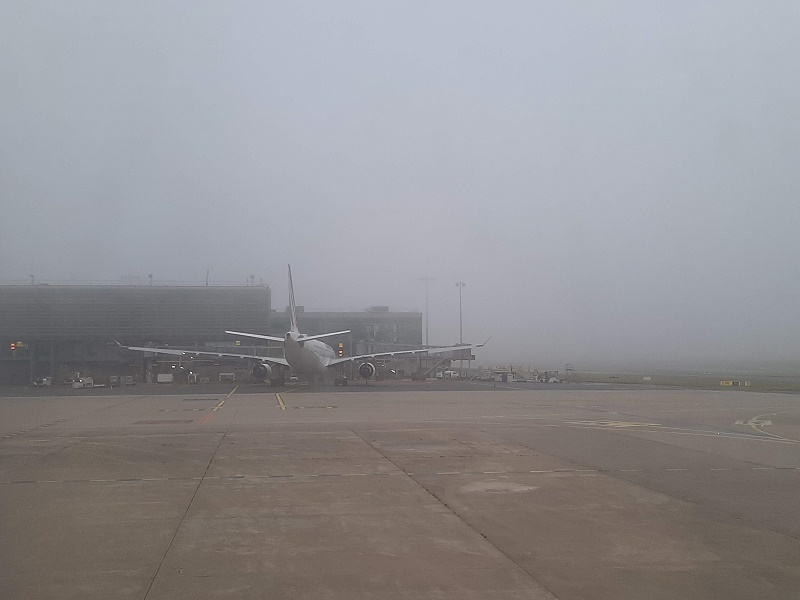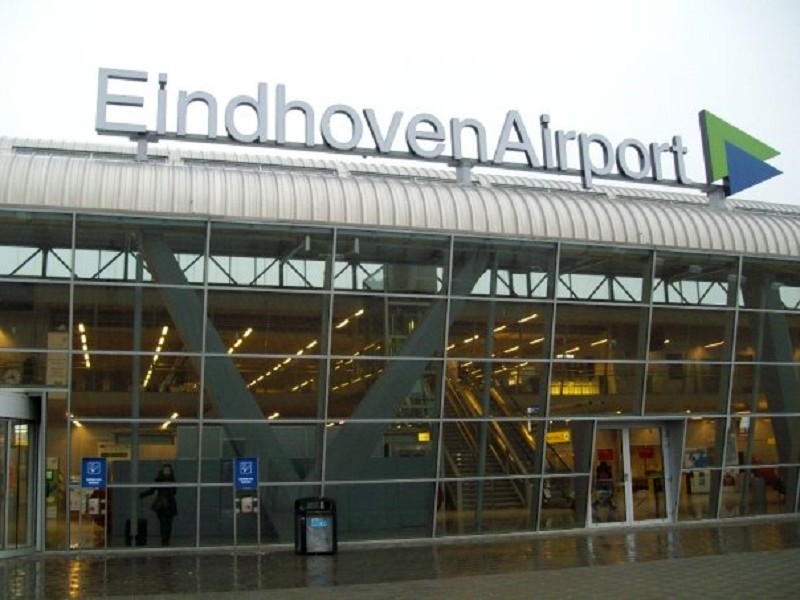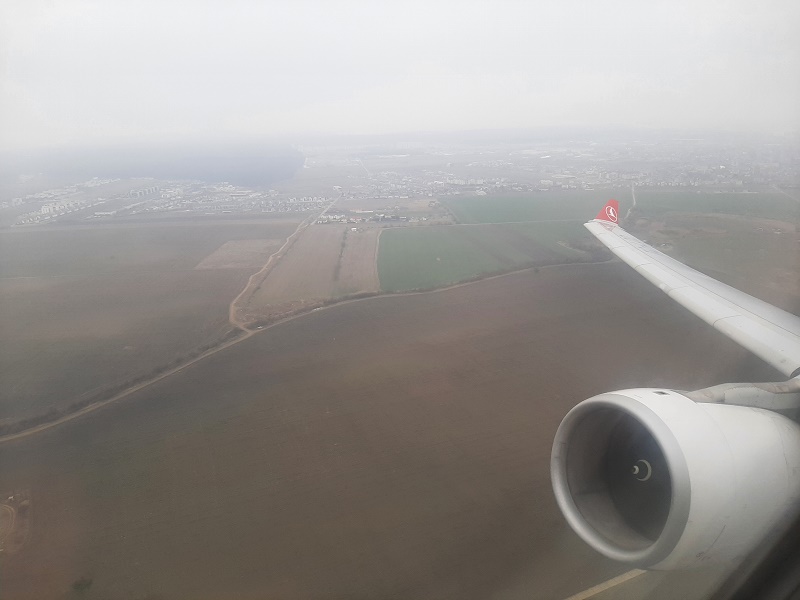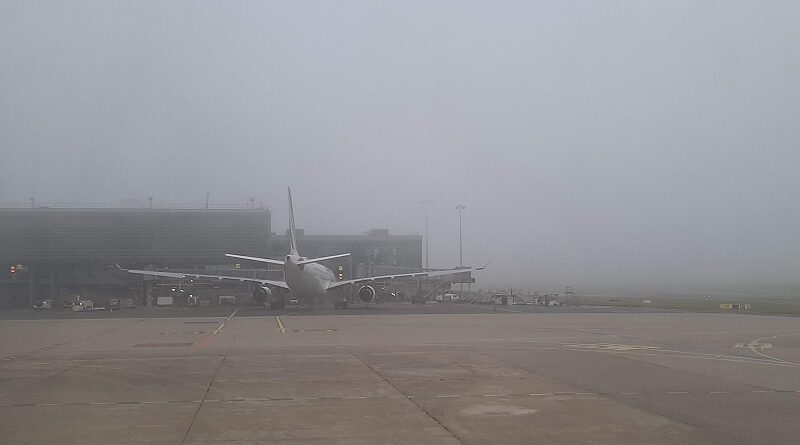Shrouded in Mist: Europe’s Most Fog-Prone Airports
Misty winter weather often leads to flight delays and cancellations across Europe: These are the most fog-prone airports on the continent.
Fog delays
If you travel frequently, you’ve likely encountered flights that are heavily delayed or even cancelled due to fog.
Especially in winter, when temperatures approach the 0 degrees Celsius mark (32°F), fog frequently appears at ground level.
Local geography plays a significant role in determining whether an airport is prone to fog, though it is not a decisive factor in whether this will lead to flight delays or cancellations.
Whether your flight might get delayed or cancelled due to fog depends on the configuration of radio navigation systems at the airport and whether planes can safely land and take off in misty conditions.

Airport landings
Nearly all commercial airports are equipped with an Instrument Landing System (ILS), a precision radio navigation system that helps aircraft approach the runway at the correct angle in poor weather and at night.
Without such systems, pilots would rely on Visual Flight Rules (VFR) and would need good weather and clear visibility to approach the runway and land the plane.
There are different ILS categories, with each allowing for different conditions under which pilots can perform a precision instrument approach and landing.
The highest ILS category 3C essentially allows pilots to perform a blind landing, relying solely on their instruments, while category 1, the lowest, permits a decision height not lower than 60m (200ft) and requires visibility of at least 800 metres (2,600 feet).
For the intermediate categories (2, 3A, 3B), some visibility is still required for pilots to perform a landing.
Basically, the higher the ILS category, the less visibility is required to perform a safe landing, and the decision height — the predetermined altitude above ground level during an instrument approach at which the pilot must make a decision whether to continue the landing or execute a go-around — will also be lower.

Fog-prone airports in Europe
The most fog-prone airports in Europe are not only those with local geography where misty conditions are common, but also generally have a low or intermediate ILS category, which still requires pilots to have a certain amount of visibility in order to land.
Although some airports have CAT 3 ILS systems and certain aircraft are certified to land in zero-visibility conditions, in practice no commercial airport operates under such circumstances, as even though a safe landing would be possible, there are no suitable systems to guide the aircraft safely across the apron to the gate.
Of course, the ILS radio navigation equipment, including approach lighting and lights built into the runway itself, becomes increasingly costly with each subsequent category, which is why generally only the largest airports are equipped to meet the specifications of the top ILS categories.
The European airports that are most prone to fog are therefore typically secondary, single-runway airports with a low ILS category and local geography where mist is a common feature.
These are four European airports where delays and cancellations due to fog are particularly common:

Eindhoven Airport
Eindhoven Airport (IATA code: EIN) is the second-largest in the Netherlands and mainly serves low-cost airlines like Ryanair, Wizz Air, and Transavia.
Especially in winter, foggy conditions can cause flight disruptions at this airport, as Eindhoven Airport is only equipped with basic CAT 1 ILS.
Just last week, 70 flights from Eindhoven Airport were delayed, cancelled, or diverted to nearby airports because of the dense fog.
According to local meteorologists, fog is most common around Eindhoven between November and March due to limited sunshine, humid air, and low winds.

Krakow Airport
Krakow Airport (IATA code: KRK), the second-largest in Poland, is also prone to fog, particularly in winter.
The dense fog hampered airport operations last Monday (20th January), and also three weeks ago, several flights were also delayed, cancelled, or rerouted due to weather conditions in Krakow.
As Krakow Airport only has CAT 1 ILS, it is more susceptible to shutdowns due to foggy conditions compared to nearby airports like Katowice and Rzeszów, both of which have CAT 2 ILS.
Krakow’s geographic location, with highlands to the north and mountains to the south, also plays a significant role in why its airport is more prone to fog than others, as the terrain makes it more difficult for wind to disperse the mist.
Another complicating factor is Krakow’s high levels of air pollution and smog, which are among the worst in Europe.

Podgorica Airport
The airport in Podgorica, the capital of Montenegro, is also prone to fog due to its local geography.
As Podgorica Airport (IATA code: TGD) has CAT 1 ILS, foggy conditions can quickly lead to flight delays, cancellations, or diversions.
For example, a recent Wizz Air flight from Budapest to Podgorica was not able to land due to the dense fog and had to divert to the Albanian capital of Tirana, 144 kilometres away by road.
The local geography — Podgorica being situated in a valley with mountains to the west, north, and east, and the large freshwater body of Lake Shkodër to the south — plays a significant role in creating foggy conditions, depending on factors such as temperature and winds.

Sarajevo Airport
The airport in Sarajevo, the capital of Bosnia, is perhaps the most fog-prone in the Balkans due to the mountainous terrain surrounding it and cold winter temperatures.
The Instagram video below, captured from the cockpit of a plane, shows how challenging a landing at Sarajevo Airport (IATA code: SJJ) can be in foggy conditions.
Given that Sarajevo has only CAT 1 ILS, fog blanketing the valley can quickly cause delays and cancellations, as I found out myself when my Air Serbia flight to Belgrade was cancelled, forcing me to take a bus from Sarajevo to Belgrade instead.
Just like Krakow, Sarajevo also fares poorly in terms of air pollution and smog, which does not help in creating favourable flying conditions.

Upgrading ILS
You might wonder why airports prone to fog don’t upgrade their ILS to a higher category.
Upgrading ILS systems to a higher category requires shutting down an entire runway for modifications, which is why airports with only a single runway are often hesitant to undertake this.
Upgrading requires a substantial financial investment, often running into millions of euros, and also necessitates the airport being effectively closed to all flights for a considerable amount of time.
For example, Eindhoven Airport will be closed for a full five months in 2027 to upgrade its ILS from Category 1 to 3, while simultaneously renovating the entire runway.
On the plus side, once the works are completed, Eindhoven is unlikely to appear again on lists of fog-prone airports, and the risk of delays and cancellations due to misty weather conditions will be significantly reduced.

Conclusion
Fog can quickly cause massive problems at airports that aren’t equipped with the highest standards of precision radio navigation systems, which help aircraft approach the runway and land safely in poor visibility.
As a result, dense fog can lead to flight diversions, delays, and cancellations at such airports.
Airports such as Eindhoven, Krakow, Sarajevo, and Podgorica are among the most fog-prone in Europe due to their local geography and being equipped with only CAT 1 ILS, the lowest category of Instrument Landing System, which requires pilots to still have decent visibility of the runway to land.

